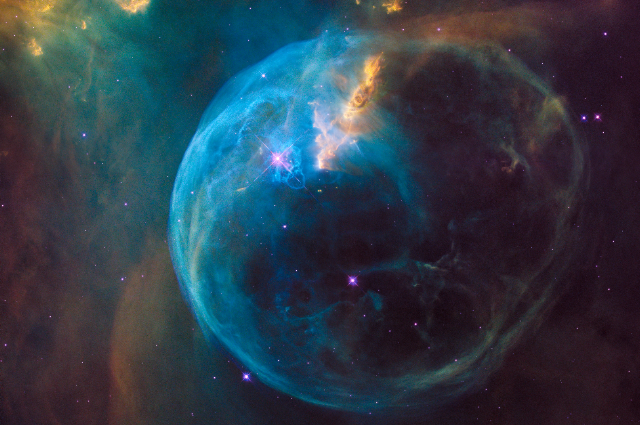
Photo by NASA on Unsplash/Representative Image
The collapse of a massive star is supposed to have caused such a big explosion more precisely the brightest cosmic explosion of all time.
It is said that a luminous burst of light that occurred some 2 billion light-years from Earth is said to have blinded many space instruments.
Scientists say that in this type of gamma-ray burst, known for being some of the brightest and the strongest explosions in the Universe which occurred in 2022 have recently come into light of certain conclusions.
Researchers found that the burst originated from an exploding star, known as 'Supernova' located in a distant galaxy.
However, the intensity of the blast led to severe implications which also led to many questions.
The burst brightness surpassed all such events of the past and has been labelled as the 'Brightest of All Time' (B.O.A.T.) and that has actually sparked the astronomers to know more about it.
What are Supernovas?
These are massive stellar explosions that occur at the end of a star's life cycle. They release huge volumes of material and energy into the space. These explosions are responsible for creating and dispersing various heavy elements like gold, platinum, lead and uranium into the universe.
But with this explosion, researchers didn't find any presence of gold and how supernovas transfer their energy and such heavy materials into the surface.
The burst of light that was spotted in 2022 has now been researched enough to conclude that the light comes from the heart of the star present and that's exploding but that explosion by itself couldn't have gone to shine so brightly.
Maybe a part of the explosion theory has been solved but a newer set of conclusions has sparked many new open end points which are yet to be maneuvered.
Falsification of previous theories is going to create another paradigm in scientific research and it shall help in taking scientific enterprise even further.
Prof Catherine Heymans of Edinburgh University and Scotland's Astronomer Royal, who is independent of the research team said, "The Universe is an amazing, wonderful and surprising place, and I love the way that it throws these conundrums at us!
"The fact that it is not giving us the answers we want is great because we can go back to the drawing board and think again and come up with better theories," she said.
The explosion was detected by telescopes in 2022. It came from a distant galaxy 2.4 billion light years away, emitting light across all frequencies. But it was especially stronger in the case of Gamma Ray which is just a stronger version of X-rays.
The gamma ray burst lasted for more than seven minutes and it was so powerful that it was off the scale and subsequent readings announced that the explosion was the brightest of all times.
Gamma-ray bursts are associated with exploding supernovas but their explanation is quite difficult due to their unparalleled brightness.
Dr Peter Blanchard, from Northwestern University in Illinois in the US, who co-led the research team, said,
"It could be that these gamma-ray bursts and supernova explosions are not necessarily directly linked to each other and they could be separate processes going on," he told BBC News.
Dr Tanmoy Laskar, from the University of Utah and co-leader of the study, said, "It's like focusing a flashlight's beam into a narrow column, as opposed to a broad beam that washes across a whole wall."
"In fact, this was one of the narrowest jets seen for a gamma-ray burst so far, which gives us a hint as to why the afterglow appeared as bright as it did" he said.
Theory rethinking shall proceed with this development as theorists need to go back and look at why an event like B.O.A.T. not producing heavy elements when simulations expect it to be there.
Hereby, we conclude that there there still many hidden secrets to our astronomical space and many to be revealed as things progress in research methodology.
. . .
References:
- bbc.com
- insightsonindia.com
- independent.co.uk
- www.space.com
